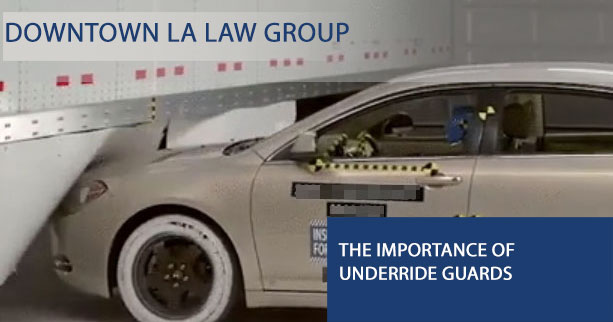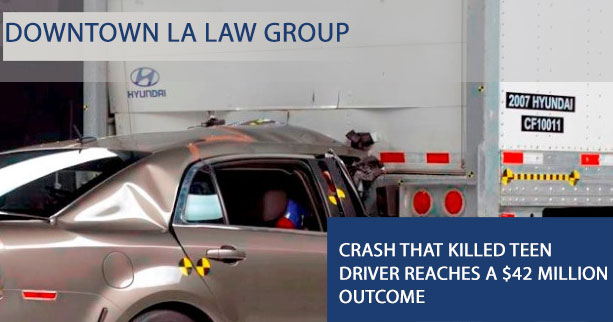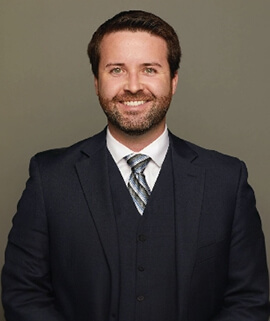Crash that Killed Teen Driver Reaches a $42 Million Outcome
Underride truck accidents are easily some of the most devastating types of accidents that anyone could suffer – the odds of surviving an underride truck accident are slim. Severely injured victims and the family members of deceased have the right to pursue claims. If you or a member of your family were harmed in a truck underride accident, do not hesitate to seek legal assistance as soon as possible – as you might have grounds to receive a claim and even recover compensation. If you would like to learn more about your right to file a claim (and injury claim or a wrongful death claim, for example) after a truck underride accident, do not hesitate to seek legal assistance with the experts at Downtown Law Firm as soon as possible.
 Downtown L.A. Law Group is a personal injury law firm with many years of experience handling a variety of claims, including but not limited to truck accident claims, auto accident claims, injury claims, wrongful death claims, and product liability claims. At our firm, we are dedicated to ensuring that all affected parties have access to all the information that they need to reach successful claim outcomes. If you would like to explore the possibility of filing a claim after a traumatic truck underride accident, do not hesitate to seek legal assistance with our experts as soon as possible.
Downtown L.A. Law Group is a personal injury law firm with many years of experience handling a variety of claims, including but not limited to truck accident claims, auto accident claims, injury claims, wrongful death claims, and product liability claims. At our firm, we are dedicated to ensuring that all affected parties have access to all the information that they need to reach successful claim outcomes. If you would like to explore the possibility of filing a claim after a traumatic truck underride accident, do not hesitate to seek legal assistance with our experts as soon as possible.
 To understand the importance of underride guards, you must be able to have a thorough understanding of underride. Underride occurs strictly in truck accidents that involve passenger vehicles. Passenger vehicles have a crash/crumple zone that is designed to absorb the force of the impact; however, this crash/crumple zone is useless in truck accidents, specifically. This is because the collision in between a passenger vehicle and a trailer does not occur in the crash/crumple zone.
The issue in truck accidents involving passenger vehicles is that these vehicles are so different in height. Because of this height difference, the crash/crumple zone in passenger vehicles usually doesn’t match the “bottom” of the trailer; instead, front of the car (the hood area) gets lodged under the trailer, and the collision occurs at the windshield area (the passenger compartment). This is called passenger compartment intrusion (PCI). In truck underride, the force of the impact is all in the passenger compartment, resulting in devastating injuries to the occupants of the passenger vehicle. Thousands of people die every year die as a result of truck accident. A significant portion of these deaths are associated with both rear and side underride.
To understand the importance of underride guards, you must be able to have a thorough understanding of underride. Underride occurs strictly in truck accidents that involve passenger vehicles. Passenger vehicles have a crash/crumple zone that is designed to absorb the force of the impact; however, this crash/crumple zone is useless in truck accidents, specifically. This is because the collision in between a passenger vehicle and a trailer does not occur in the crash/crumple zone.
The issue in truck accidents involving passenger vehicles is that these vehicles are so different in height. Because of this height difference, the crash/crumple zone in passenger vehicles usually doesn’t match the “bottom” of the trailer; instead, front of the car (the hood area) gets lodged under the trailer, and the collision occurs at the windshield area (the passenger compartment). This is called passenger compartment intrusion (PCI). In truck underride, the force of the impact is all in the passenger compartment, resulting in devastating injuries to the occupants of the passenger vehicle. Thousands of people die every year die as a result of truck accident. A significant portion of these deaths are associated with both rear and side underride.
 Besides being inefficient when the impact is not centered, other issues include weak materials and poor designs being used on rear guards. Without a doubt, rear underride guards are not 100% effective. In 2017, there was a failed motion to make changes to underride laws. The Stop Underride Act would have implemented stronger rear underride guard regulations and would have introduced a requirement for side underride guards. Unfortunately, the act failed. In 2019, the Stop Underride Act was reintroduced. With the extensive opposition that it continues to face, it is unlikely that the act will pass.
Besides being inefficient when the impact is not centered, other issues include weak materials and poor designs being used on rear guards. Without a doubt, rear underride guards are not 100% effective. In 2017, there was a failed motion to make changes to underride laws. The Stop Underride Act would have implemented stronger rear underride guard regulations and would have introduced a requirement for side underride guards. Unfortunately, the act failed. In 2019, the Stop Underride Act was reintroduced. With the extensive opposition that it continues to face, it is unlikely that the act will pass.
 Downtown L.A. Law Group is a personal injury law firm with many years of experience handling a variety of claims, including but not limited to truck accident claims, auto accident claims, injury claims, wrongful death claims, and product liability claims. At our firm, we are dedicated to ensuring that all affected parties have access to all the information that they need to reach successful claim outcomes. If you would like to explore the possibility of filing a claim after a traumatic truck underride accident, do not hesitate to seek legal assistance with our experts as soon as possible.
Downtown L.A. Law Group is a personal injury law firm with many years of experience handling a variety of claims, including but not limited to truck accident claims, auto accident claims, injury claims, wrongful death claims, and product liability claims. At our firm, we are dedicated to ensuring that all affected parties have access to all the information that they need to reach successful claim outcomes. If you would like to explore the possibility of filing a claim after a traumatic truck underride accident, do not hesitate to seek legal assistance with our experts as soon as possible.
Truck Underride Kills 16-Year-Old Driver – Family Awarded $42 Million
A Santa Fe County Jury awarded the family of a Tijeras teen driver $42 million wrongful death associated with a crash that occurred in November of 2015. The teen driver, Riley Hein, was driving at approximately 6:15 a.m. to a scheduled morning band practice at his high school. The teen was driving on Interstate 40. Suddenly, a truck (pulling a trailer) entered his lane; this forced Riley Hein off the road – his car, a Honda Civic, ricocheted off a concrete barrier on the interstate and became lodged under the trailer. According to reports, the driver of the commercial vehicle was not aware of the collision, which explains why Hein’s car was dragged down the interstate for approximately half a mile. The teen’s car eventually burst into flames, while still lodged under the trailer. It was the fire that killed Riley Hein. The Hein family took legal action for the death of the teenager. The family settled with one of the defendants and his insurance company. Although they were eventually awarded $42 million, the family will only receive 45% of this amount (because of the prior settlement). The Hein family, however, has repeatedly stated that they are not interested in recovering monetary compensation; on the contrary, they are interested in sharing their son’s devastating story to influence changes in underride legislation. Unfortunately, important changes or implementations in regulations regarding truck underride is preceded by a catastrophic event. In the late 1960s, for example, a well-known actress died when the vehicle in which she was traveling crashed into a trailer – resulting in underride. After this event, the concept of rear underride guards was introduced. However, rear underride guards were never mandatory – at least not until the late 1990s. Although rear underride guards are required by federal law, there is no requirement for side underride guards.The Importance of Underride Guards
 To understand the importance of underride guards, you must be able to have a thorough understanding of underride. Underride occurs strictly in truck accidents that involve passenger vehicles. Passenger vehicles have a crash/crumple zone that is designed to absorb the force of the impact; however, this crash/crumple zone is useless in truck accidents, specifically. This is because the collision in between a passenger vehicle and a trailer does not occur in the crash/crumple zone.
The issue in truck accidents involving passenger vehicles is that these vehicles are so different in height. Because of this height difference, the crash/crumple zone in passenger vehicles usually doesn’t match the “bottom” of the trailer; instead, front of the car (the hood area) gets lodged under the trailer, and the collision occurs at the windshield area (the passenger compartment). This is called passenger compartment intrusion (PCI). In truck underride, the force of the impact is all in the passenger compartment, resulting in devastating injuries to the occupants of the passenger vehicle. Thousands of people die every year die as a result of truck accident. A significant portion of these deaths are associated with both rear and side underride.
To understand the importance of underride guards, you must be able to have a thorough understanding of underride. Underride occurs strictly in truck accidents that involve passenger vehicles. Passenger vehicles have a crash/crumple zone that is designed to absorb the force of the impact; however, this crash/crumple zone is useless in truck accidents, specifically. This is because the collision in between a passenger vehicle and a trailer does not occur in the crash/crumple zone.
The issue in truck accidents involving passenger vehicles is that these vehicles are so different in height. Because of this height difference, the crash/crumple zone in passenger vehicles usually doesn’t match the “bottom” of the trailer; instead, front of the car (the hood area) gets lodged under the trailer, and the collision occurs at the windshield area (the passenger compartment). This is called passenger compartment intrusion (PCI). In truck underride, the force of the impact is all in the passenger compartment, resulting in devastating injuries to the occupants of the passenger vehicle. Thousands of people die every year die as a result of truck accident. A significant portion of these deaths are associated with both rear and side underride.
Laws Regarding Truck Underride
Truck underride is acknowledged as a major problem; if it wasn’t, there wouldn’t be any laws whatsoever on the matter. Current underride regulations were implemented back in 1996. The laws were amended in 1998. However, there have been no significant changes over the years – and underride truck accidents continue to be a major problem. The current underride laws, FMVSS No. 223 and FMVSS No. 224, establish the equipment standards and vehicle standard. These laws only mandate rear underride guards. They establish how strong rear underride guards must be, the specific testing requirements to subject the underride guards to, the specific installation instructions/requirements, as well as the type of commercial vehicles that must be equipped with the underride guards. Many people claim that these underride guard laws are outdated – and do nothing in preventing underride truck accidents. Safety tests conducted by the Insurance Institute of Highway Safety concluded that rear underride guards – specifically those that are compliant with the federal underride laws mentioned above – are ineffective. The test confirmed that rear underride guards are ineffective when the collision occurs at the outer edges of the rear guards; the guards are only 100% effective in preventing PCI when collisions occur at the center of the rear guard. The tests also concluded that when rear guards failed and PCI did occur, the occupants of the passenger vehicle suffered fatal head and neck injuries (this is based on the injuries registered on crash-test dummies). Besides being inefficient when the impact is not centered, other issues include weak materials and poor designs being used on rear guards. Without a doubt, rear underride guards are not 100% effective. In 2017, there was a failed motion to make changes to underride laws. The Stop Underride Act would have implemented stronger rear underride guard regulations and would have introduced a requirement for side underride guards. Unfortunately, the act failed. In 2019, the Stop Underride Act was reintroduced. With the extensive opposition that it continues to face, it is unlikely that the act will pass.
Besides being inefficient when the impact is not centered, other issues include weak materials and poor designs being used on rear guards. Without a doubt, rear underride guards are not 100% effective. In 2017, there was a failed motion to make changes to underride laws. The Stop Underride Act would have implemented stronger rear underride guard regulations and would have introduced a requirement for side underride guards. Unfortunately, the act failed. In 2019, the Stop Underride Act was reintroduced. With the extensive opposition that it continues to face, it is unlikely that the act will pass.
Establishing Liability in Truck Underride Accidents
In truck underride accidents, liability can vary significantly. To be able to establish liability, there must be a duty of care and a breached duty of care – as well harm directly associated with the breach of duty. In general, liability falls onto the drivers directly involved in the accident. For instance, a truck driver could be liable for the accident if he or she was driving the truck recklessly (like weaving in and out of traffic and changing lanes without looking, for example).The driver of the passenger vehicle could also be liable if he or she was driving recklessly (tailgating, for instance). However, when there is an issue with the underride guard liability changes. Even if the driver of the passenger vehicle was completely at fault for the accident, the truck/trucking company could be partially liable just because of issues with the underride guard. Consider the following:- Trucking companies and truck owners have the duty to ensure that their trucks are up to all regulations. This means that their trucks must be equipped with underride guards. They must ensure that their trucks are up to standard with the appropriate underride guards.
- The companies that manufacture underride guards have the duty to ensure that their guards meet all requirements established by federal law. They have the duty to ensure that their underride guards are designed and manufactured effectively. They also have the duty to ensure that the installation guidelines for their guards are clear and appropriate. If there are any defects present in the underride guards, these companies must take immediate action to ensure that all defects are addressed before the guards are on the market.
- The parties that install underride guards have the duty to ensure that they are following appropriate instructions to install the underride guards as directed to ensure that they are safe and effective in preventing underride.
Your Right to File a Claim
As discussed above, multiple parties could face liability for the harm resulting from truck underride accidents. Liability is based on the fact that a party or entity owed you a specific duty of care – the breached duty of care directly resulted in the harm suffered. When the negligent actions of a party or entity (breached duty of care) directly results in harm, victims and their families will likely have the right to file a claim. If you would like to learn more about your right to file a claim after the harm resulting from an underride truck accident, do not hesitate to contact our law firm immediately.Could You Recover Compensation?
Do you have the right to recover monetary compensation for the damages resulting from an underride truck accident? Depending on the details of the incident, claimants might be eligible to recover compensation for medical expenses, lost wages, pain and suffering, funeral and burial costs, loss of consortium, property damage, and punitive damages, for example. Although there is no guarantee on the type and amount of compensation that you might be eligible to recover, you can be certain that an aggressive attorney will be evaluate the value of your claim and fight for your right to recover the highest amount of compensation available. If you would like to learn more about the specific type and amount of compensation that you might be eligible to recover if your truck underride accident claim reaches a successful claim outcome, do not hesitate to contact our law firm immediately.The Deadline to Sue
If you are interested in pursuing a claim, you must be aware that there are deadlines that you must adhere to. Specifically, all claims are subject to statutes of limitations. A statue of limitations determines the specific length of time that claimants have to file their claims. Injury claims and wrongful death claims in California are typically subject to a two-year statute of limitations, giving claimants only two years to file a claim. Failing to file on time will – undoubtedly – result in losing the right to sue. To prevent losing your right to sue, it is important that you have a thorough understanding of the timeline that applies to your claim.Contact Downtown L.A. Law Group
After you or a member of your family sustained any sort of harm as a direct result of truck underride, it is important that you take the appropriate actions necessary to preserve your right to sue. For instance, the affected parties should have photos of the scene of the accident as well as photos of the injuries sustained in the accident. The affected parties should also have the insurance information of the parties involved in the accident as well as the contact information for any witnesses to the accident. The affected parties should file and have a record of an accident report with the appropriate authorities. Medical care and medical records are also essential. The most important thing, however, is seeking legal assistance. If you are in need of legal assistance after being affected by an underride truck accident, it is essential that you contact the experts at Downtown L.A. Law Group immediately. Downtown L.A. Law Group is a personal injury law firm with many years of experience handling all sorts of claims – always fighting for the rights of our clients to recover the compensation that they deserve. At Downtown L.A. Law Group, we are dedicated to ensuring that all affected parties have access to all the information that they need to begin or continue their claims; specifically, our firm offers free consultations and free second opinions. During our free consultations and free second opinions, our lawyers will be available to answer all your questions and address all your concerns, guiding you towards reaching a successful claim outcome. Our free legal services are available through a Zero-Fee guarantee that ensures that our clients never have to worry about paying any upfront legal fees for any of our legal services. Our firm is also based on a contingency structure; therefore, our clients will only be required to pay legal fees until after reaching a successful claim outcome. If you do not win, you will not be required to pay anything. If you are ready to benefit from our free legal services and discuss your claim with the experts at our law firm, contact us today.
By submitting this form, you agree to receive telephone calls and text messages at anytime, which include hours outside of business hours (8:00 am PST – 9:00 pm PST). This is so that we may reach you as soon as possible in order to consult on your potential case.


















